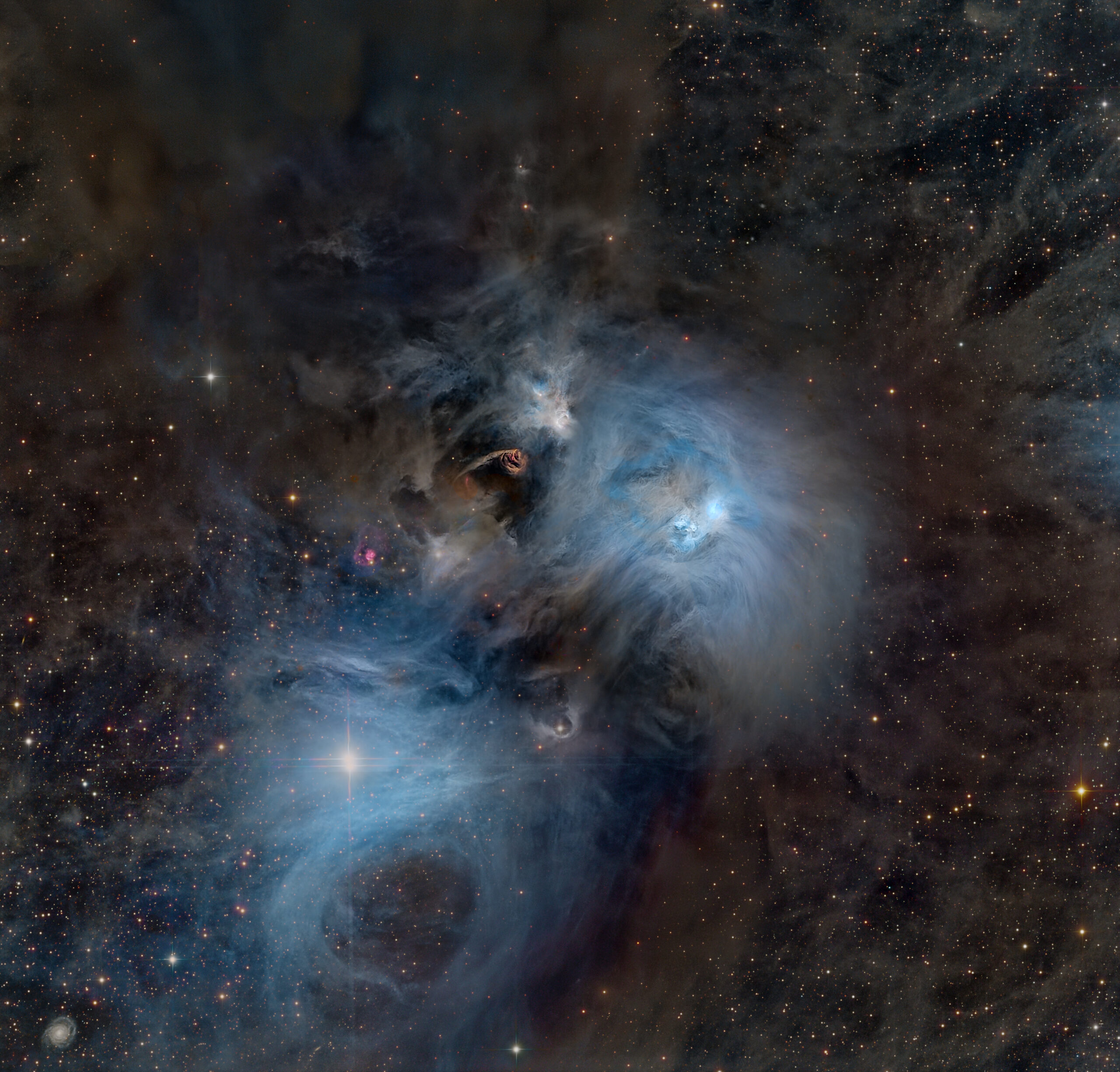
At just 420 light-years away, the Corona Australis molecular cloud is one of the closest and most active regions of ongoing star formation in the sky. This image captures its brightest reflection nebulae—NGC 6726, NGC 6727, NGC 6729, and IC 4812—all set against a dramatic backdrop of dense dust, glowing gas, and emerging stars.
The blue glow seen throughout the image is starlight reflected off interstellar dust grains. The brightest patches—NGC 6726 and NGC 6727—are illuminated by the young hot stars HD 176269 and HD 176270, while the fan-shaped nebula NGC 6729 wraps around the variable star R Coronae Australis, still embedded within the cloud. To the southeast lies IC 4812, a fainter but equally striking reflection nebula extending into the surrounding dark lanes.
This region is a study in contrast and structure: luminous blue streamers and glowing arcs fade into pitch-black dust clouds, some of which form striking cavities and tunnels likely carved by stellar winds or jets from newborn stars. Faint reddish emission regions—Herbig-Haro objects—trace the energetic outflows of protostars as they interact with the surrounding gas.
Above the brightest nebulae, the dark cloud itself looms with textured complexity—veils and filaments woven into the scene, creating the impression of turbulent flow. The interplay of reflection, obscuration, and emission reveals both the quiet presence of dust and the restless processes of stellar birth unfolding within it.
The entire area shown here spans approximately 3.1 by 4.3 light-years, offering a richly layered view into one of the most visually intricate and physically dynamic regions of the southern sky.
Imaged in LRGB on my Planewave CDK 1000 and RiDK 500 at Observatorio El Sauce, Chile.
Image acquisition and processing: Mike Selby